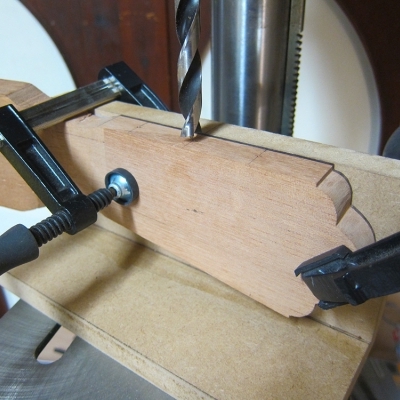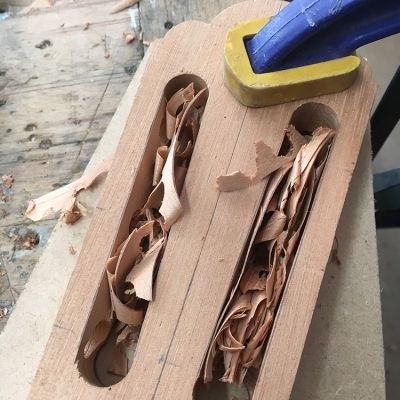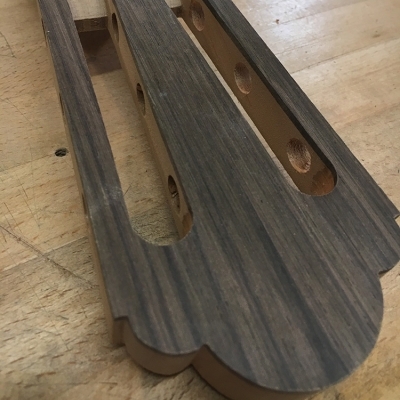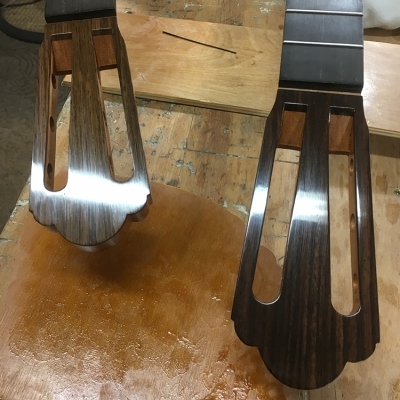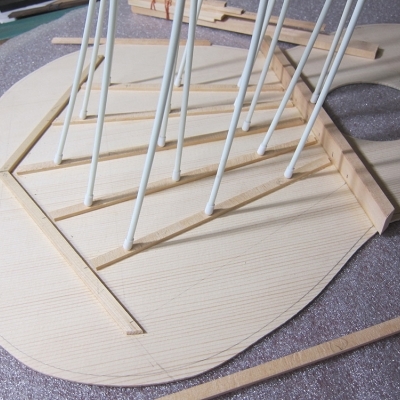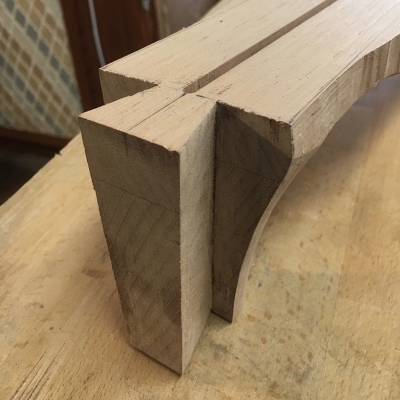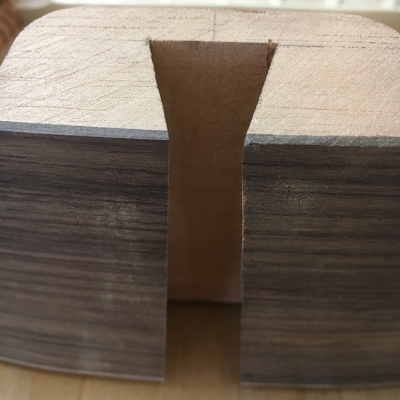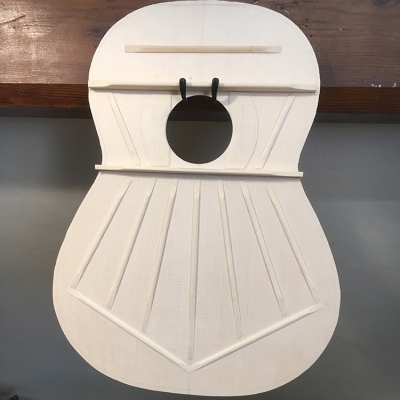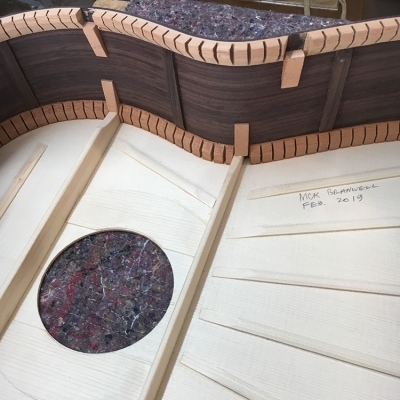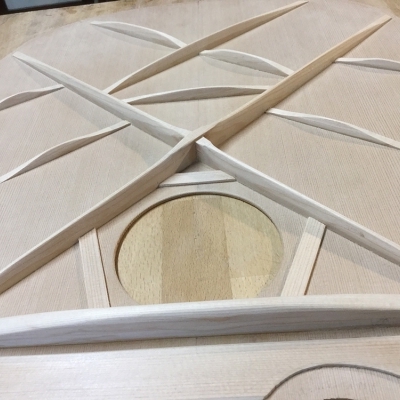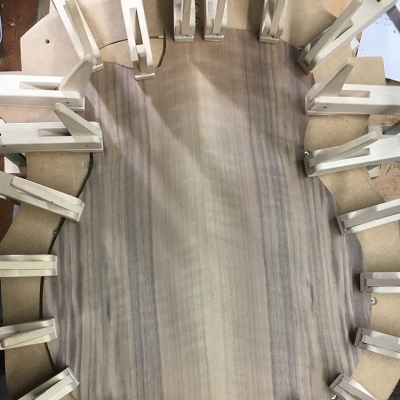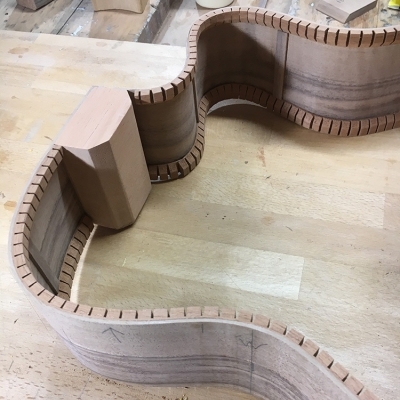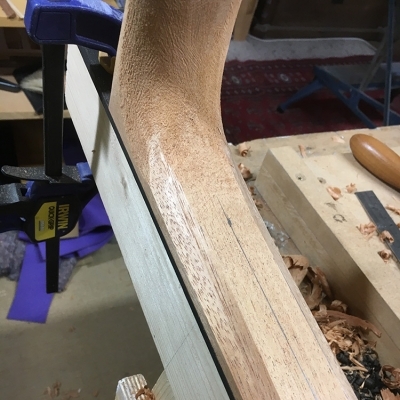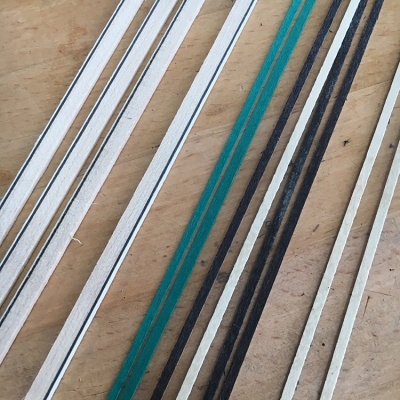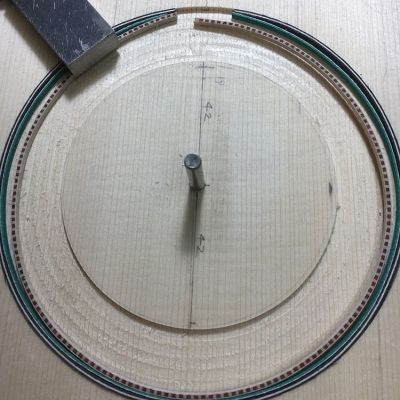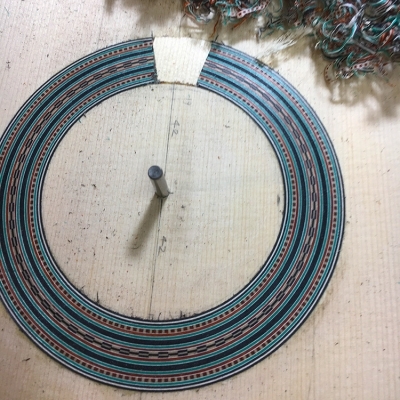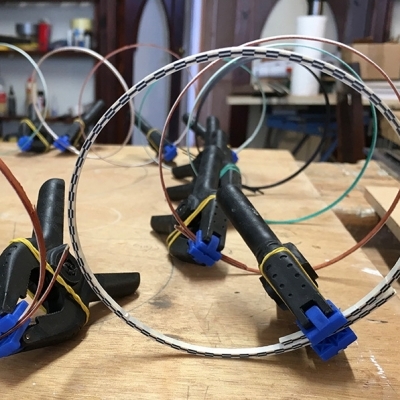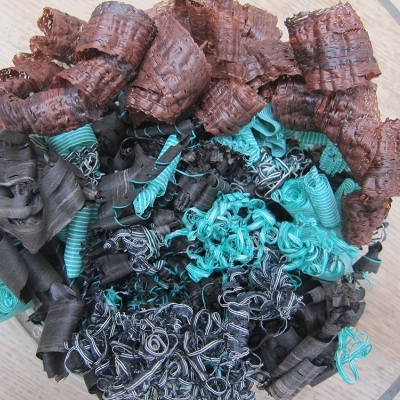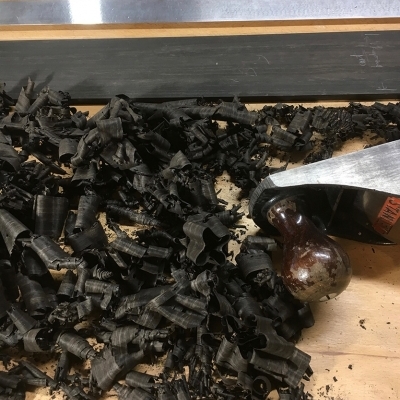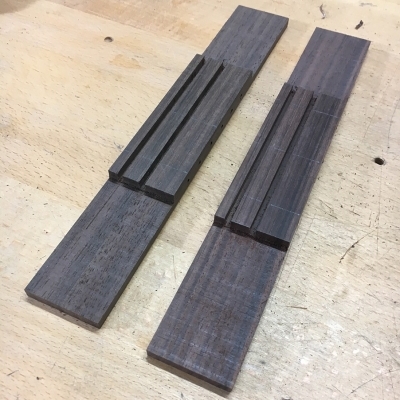
Materials & Construction
Steel string guitars have a true mahogany (swietonia) neck, classical guitars have ‘cedar’ (cedrela) which is a little lighter - both in weight and colour.
For steel strings, various spruces (picea) are good for the soundboard - Sitka, Engelmann, Alpine. Also ‘western red cedar’ (thuya). For classical guitars I use Alpine spruce. The top is universally agreed to be the crucial factor in the sound. The prettiest, perfectly quarter-sawn, even-grained wood does not necessarily make the best guitars.
Anything goes for backs and sides. Really. Torres made his famous papier-mache guitar all those years ago to prove the point. But you want it to look nice, and decent straight-grained wood is easier to work and bend. Back in Torres’ day, he used locally sourced cypress for his cheap guitars and rosewood, or figured maple, for the posh ones. Flamenco players couldn’t afford the expensive guitars, so cypress-backed guitars evolved into the ‘true’ flamenco guitar. People now debate whether the ‘flamenco negra’ guitars with the rosewood back sound as good as the ‘flamenco bianca’ with the cypress back.
I’ve used many types of wood for backs and sides, but mostly use Indian rosewood especially for classical guitars. Other favourite species are flamed maple and walnut. The species doubtless affects the sound, but I find it hard to predict.
Fretboards - ebony. Steel-string fretboards have an ebony binding, which doesn’t show, but eliminates the problem of sharp fret ends projecting in dry conditions. I also put a slight twist in fretboards so that there’s less difference in saddle height between top and bottom strings.
Bridges - ebony for steel strings, rosewood for classicals.
Bindings, purflings, rosettes - I make my own from various naturally coloured woods and from stained veneers where I can’t get a natural colour – eg green!
Steel-string guitars have a two-way truss rod, adjustable at the head end. The pocket is concealed with a cover held by tiny magnets. Classicals have a strip of graphite for neck reinforcement.
I join the neck to the head with a simple splice or ‘scarf’ joint. It’s very easy, very strong and is the least wasteful of wood.
I use a tapered dovetail joint to join the neck and body. This is traditional for steel string guitars, though more and more makers take a bolt-on approach. It’s tricky getting the geometry right, but very satisfying. It’s not normal however for classical guitars. The Spanish method is to build upside-down on a board or ‘solera’, integrating the neck at the beginning. This means my Torres copies are not ‘authentic’. But the great Ignacio Fleta used a dovetail joint, and anything good enough for Julian Bream is good enough for me.
‘Flat topped’ guitars are not actually flat-topped, they normally have some doming. My doming is a bit more than most (I use a 20’ radius), which makes a more stable structure which can therefore be built lighter. My backs have a 15’ or 12’ radius.
I use fairly conventional X bracing on the steel string guitars, usually with a symmetrical arrangement for the lower bars. Classical guitars generally have normal Torres style 7 fan bracing, but the Garcia model has 8, and I also do a lattice braced version of the T3 model. Archtops are quite different - just two nearly parallel braces.
My steel string bridges are unconventional - no pins, no holes to feed the strings through. The strings simply slot in and are held in place by tension. It works.
I control the humidity in my workshop – between 40% and 50% is ok.
Guitar making is a combination of empirical and theoretical. But it’s mostly empirical! With musical instruments, theory has come after practice. We can be sure that CF Martin and Torres knew nothing of Young’s Modulus or the Cube Rule when working out how stiff versus flexible to make their tops. They wouldn’t have talked about nodes and modes or Chladni plates either. Certain things can be derived mathematically, and the more precise the better - for instance fret spacing.
But when it comes to working with wood, there are so many interdependent variables, with each piece of wood - soundboard, bracing material - different from the next, even when taken from adjacent pieces from the same tree, that we have to rely on less precise approaches, even something as mysterious as intuition. Factory-made guitars tend to be over-engineered because the process doesn’t allow each plate or strut to be individually thinned or shaped. Does this mean hand-made guitars are generally better? My answer is probably, if the maker is really on the ball and is able to make something that is strong, stable and flexible at the same time. I’ve played some shockingly dull but eye-wateringly expensive guitars, and some cheap laminated guitars that sound heavenly.
Generally though, I follow in the footsteps of the great makers of the past - and the present. There are some wonderful makers, and the fact that some of them talk science and some of them don’t, doesn’t seem to be a factor.
Decoration - My first guitars were super plain - bindings to cover the joins between sides and top and back and a couple of circles round the soundhole, nothing else. I’ve allowed a little more decoration in, particularly the rosettes on my Torres models, but generally I like to keep it simple. The only inlay work I do is my (optional) headstock logo - either a stylised arrangement of my initials, NHB, or a triangular design, plus (optional) pearl dots on fingerboard and on classical bridges. Torres started out with very blingy guitars and got plainer as he got older. Probably shaky hands and bad eyes came into it, but also maybe the need to make affordable guitars.
Which brings me back to my ‘mission’, if you like: to make high quality, resonant, responsive guitars at a price that players can afford.
Each guitar is more or less a month’s work.






